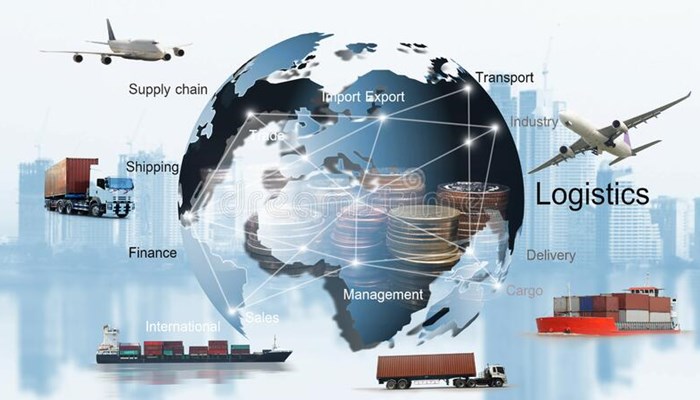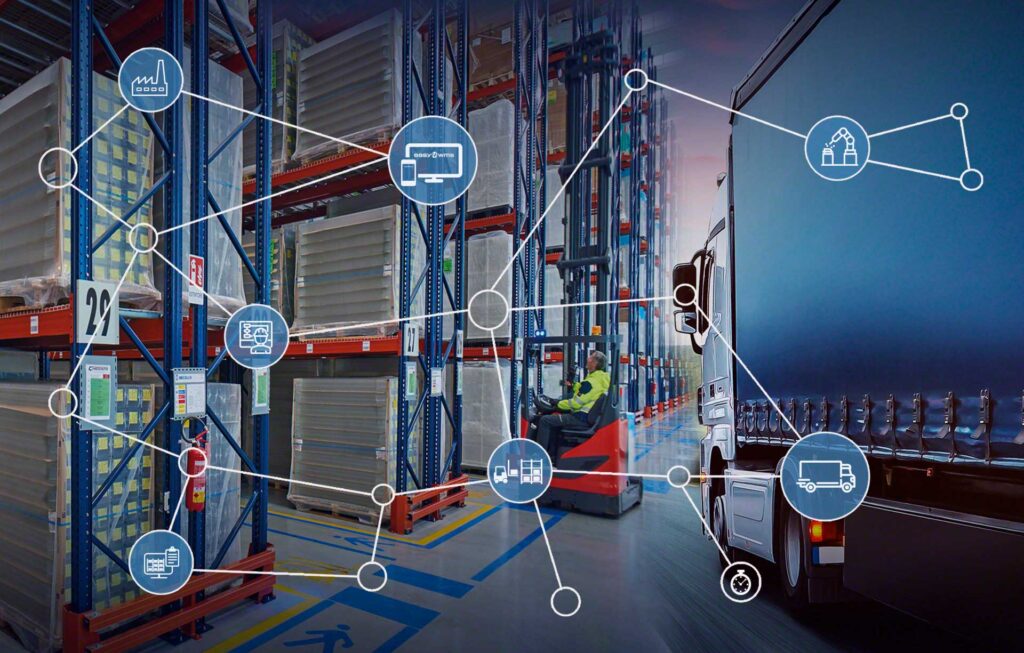In today’s fast-paced and highly competitive business environment, effective supply chain management has become a critical success factor for companies looking to stay ahead of the curve. Integrated logistics is a strategic approach that plays a pivotal role in optimizing the supply chain, reducing costs, enhancing efficiency, and ensuring a seamless flow of goods and information. In this comprehensive blog post, we will delve into the world of integrated logistics, exploring its benefits, key strategies, and how to effectively implement this approach to maximize your business’s potential.
Table of Contents
What is Integrated Logistics?

Integrated logistics, also known as integrated supply chain management, is a holistic approach that combines various elements of the supply chain into a well-coordinated and synchronized system. The primary goal is to streamline the entire process, from the procurement of raw materials to the delivery of finished products to customers. Integrated logistics involves the management of transportation, warehousing, inventory, and information flow, all under one cohesive strategy.
Key Elements of Integrated Logistics
- Transportation Management: Efficiently managing the movement of goods through various transportation modes, including trucks, ships, planes, and railways.
- Warehousing and Inventory Control: Optimizing warehouse operations and maintaining the right levels of inventory to ensure timely product availability.
- Information Technology: Utilizing advanced technology, such as supply chain management software and data analytics, to enhance visibility and control.
- Supplier and Vendor Management: Developing strong relationships with suppliers and vendors to improve lead times and reduce costs.
- Customer Service and Order Fulfillment: Ensuring excellent customer service and timely order fulfillment to meet customer demands.
Benefits of Integrated Logistics
Integrated logistics offers numerous advantages for businesses of all sizes and industries. Here are some of the key benefits:
- Cost Reduction: Streamlining operations, reducing inefficiencies, and optimizing transportation and inventory can lead to significant cost savings.
- Improved Efficiency: The synchronized approach ensures that resources are utilized efficiently, resulting in quicker lead times and enhanced service quality.
- Enhanced Customer Satisfaction: Meeting customer demands in a timely manner, thanks to improved order fulfillment, can lead to higher customer satisfaction and loyalty.
- Better Decision-Making: Access to real-time data and analytics helps in making informed decisions, adapting to market changes, and mitigating risks.
- Competitive Advantage: It can provide a competitive edge by allowing businesses to adapt quickly to market changes and deliver goods more efficiently than competitors.
Strategies for Implementing Integrated Logistics
Implementing integrated logistics can be a complex endeavor, but with the right strategies, it is attainable for businesses in various industries. Here are some key strategies for successful implementation:

Develop a Comprehensive Plan
A well-thought-out plan is essential for implementing integrated logistics successfully. Start by defining your objectives, understanding your current supply chain processes, and identifying areas that need improvement. This plan should consider factors like cost reduction, improved service levels, and agility in responding to market changes.
Invest in Technology
Information technology plays a vital role in integrating logistics. Invest in supply chain management software and systems that offer real-time visibility, data analytics, and automation capabilities. These tools will help you monitor and manage your supply chain more effectively.
Collaboration and Communication
Effective collaboration between various departments and stakeholders is crucial for integrating logistics. Ensure that teams responsible for procurement, production, warehousing, and transportation are in sync. Use clear communication channels to share information and coordinate activities.
Supplier and Vendor Management
Strengthen relationships with suppliers and vendors. Implement just-in-time (JIT) inventory practices to reduce inventory holding costs and improve lead times. Engage in open communication to understand their capabilities and limitations.
Continuous Improvement
Integrating logistics is an ongoing process. Regularly evaluate your supply chain operations, identify areas for improvement, and implement changes accordingly. Continuous improvement is a fundamental aspect of maintaining competitiveness.
Employee Training
Properly train your employees in the principles and practices of integrating logistics. Knowledgeable and skilled employees can make a significant difference in the success of your implementation.
The Implementation Process
Implementing and integrating logistics requires careful planning and execution. Here’s a step-by-step guide to help you navigate the implementation process:

Assess Your Current Supply Chain
Start by conducting a thorough assessment of your current supply chain operations. Identify bottlenecks, inefficiencies, and areas where integration can make a difference.
Set Clear Objectives
Define specific and measurable objectives for your integrating logistics implementation. These objectives could include reducing transportation costs by a certain percentage, improving order fulfillment times, or enhancing overall supply chain visibility.
Choose the Right Technology
Invest in the appropriate technology and software solutions that align with your objectives. Ensure that the chosen tools offer the features necessary for seamless integration.
Build Cross-Functional Teams
Form cross-functional teams that bring together employees from different departments involved in the supply chain. These teams should collaborate on implementing and integrating logistics strategies.
Create a Timeline
Develop a realistic timeline for the implementation process. Set milestones and deadlines to track progress effectively.
Test and Optimize
Before fully deploying integrating logistics, conduct pilot tests to identify any issues or areas that need improvement. Optimize the process based on the feedback and data collected during the testing phase.
Monitor and Measure
Once integrating logistics is in full operation, closely monitor key performance indicators (KPIs) to ensure that the objectives are being met. Continuously measure and assess the impact on your supply chain’s efficiency and cost-effectiveness.
Adapt and Evolve
In the ever-changing business environment, flexibility is crucial. Be prepared to adapt your integrating logistics strategies and processes to meet new challenges and opportunities as they arise.
Overcoming Challenges
While integrated logistics offers numerous advantages, it’s not without its challenges. Here are some common obstacles and how to overcome them:
Resistance to Change
Employees and stakeholders may resist the changes brought about by integrated logistics. To overcome this challenge, provide training, communicate the benefits, and involve key personnel in the decision-making process.
Information Sharing
In some cases, sharing sensitive supply chain information with partners can be a concern. Implement data security measures and confidentiality agreements to address these concerns.
Technology Integration
Integrating various technology systems can be complex. Seek expert assistance when necessary, and ensure that the selected technologies are compatible.
Cost
Implementing integrating logistics may require initial investment, but the long-term benefits often outweigh the costs. Carefully calculate the return on investment to justify the expenses.
Future Trends in Integrated Logistics
As the business landscape continues to evolve, integrated logistics will also adapt to new trends and technologies. Here are some future trends to keep an eye on:

Artificial Intelligence (AI) and Machine Learning
AI and machine learning will play a more significant role in predictive analytics, helping businesses forecast demand, optimize routes, and make data-driven decisions.
Sustainability
Sustainability will be a growing concern, with integrated logistics aiming to reduce the environmental impact through eco-friendly transportation and warehousing solutions.
Blockchain
Blockchain technology will enhance supply chain transparency and security, reducing the risk of fraud and improving trust among partners.
E-commerce Integration
The integration of e-commerce into traditional supply chain operations will continue to evolve, requiring seamless coordination between online and offline sales channels.
3D Printing
3D printing may disrupt traditional manufacturing and distribution methods, necessitating adjustments in supply chain strategies.
Conclusion
Integrated logistics is a powerful approach that can transform your supply chain, leading to cost savings, improved efficiency, and increased customer satisfaction. By implementing the right strategies and technology, you can successfully integrate your logistics operations and stay competitive in an ever-changing business landscape.
Whether you’re a retailer like Walmart or a fashion brand like Zara, the principles of integrated logistics are applicable across industries. As you plan your integrated logistics journey, remember that it’s an ongoing process that requires continuous improvement and adaptation to remain competitive and meet the evolving demands of your customers and the market. Embrace this holistic approach, and you’ll be well on your way to reaping the benefits of integrated logistics in your business.
